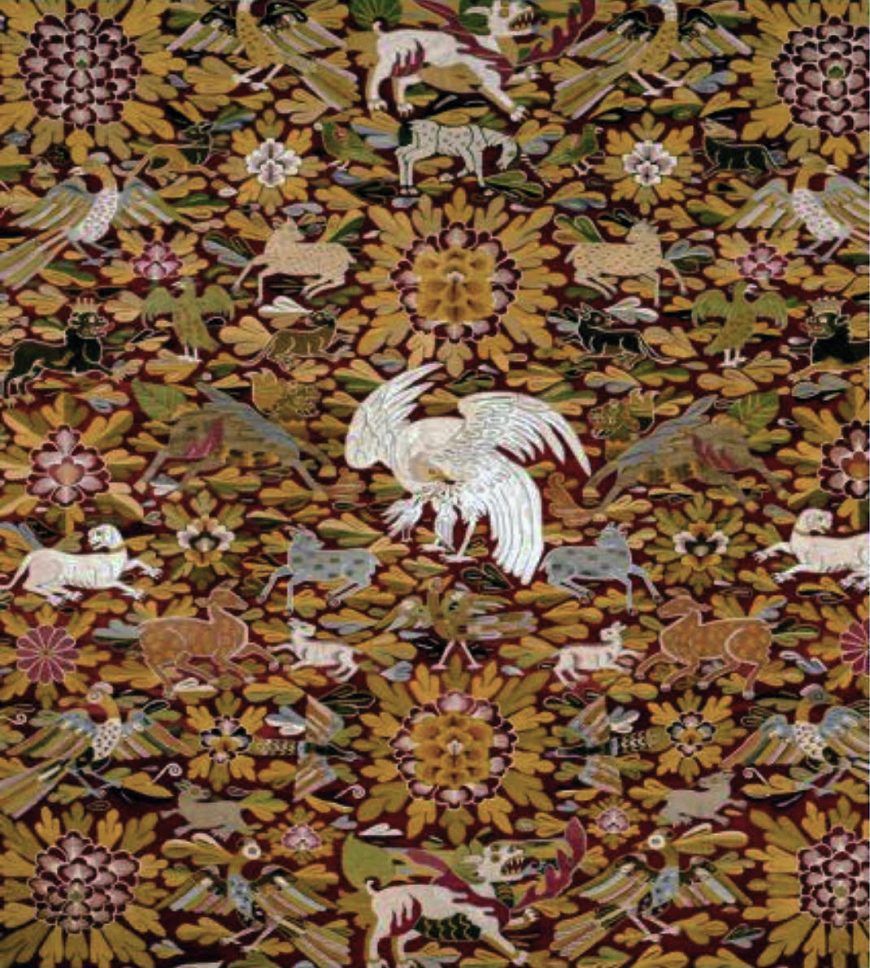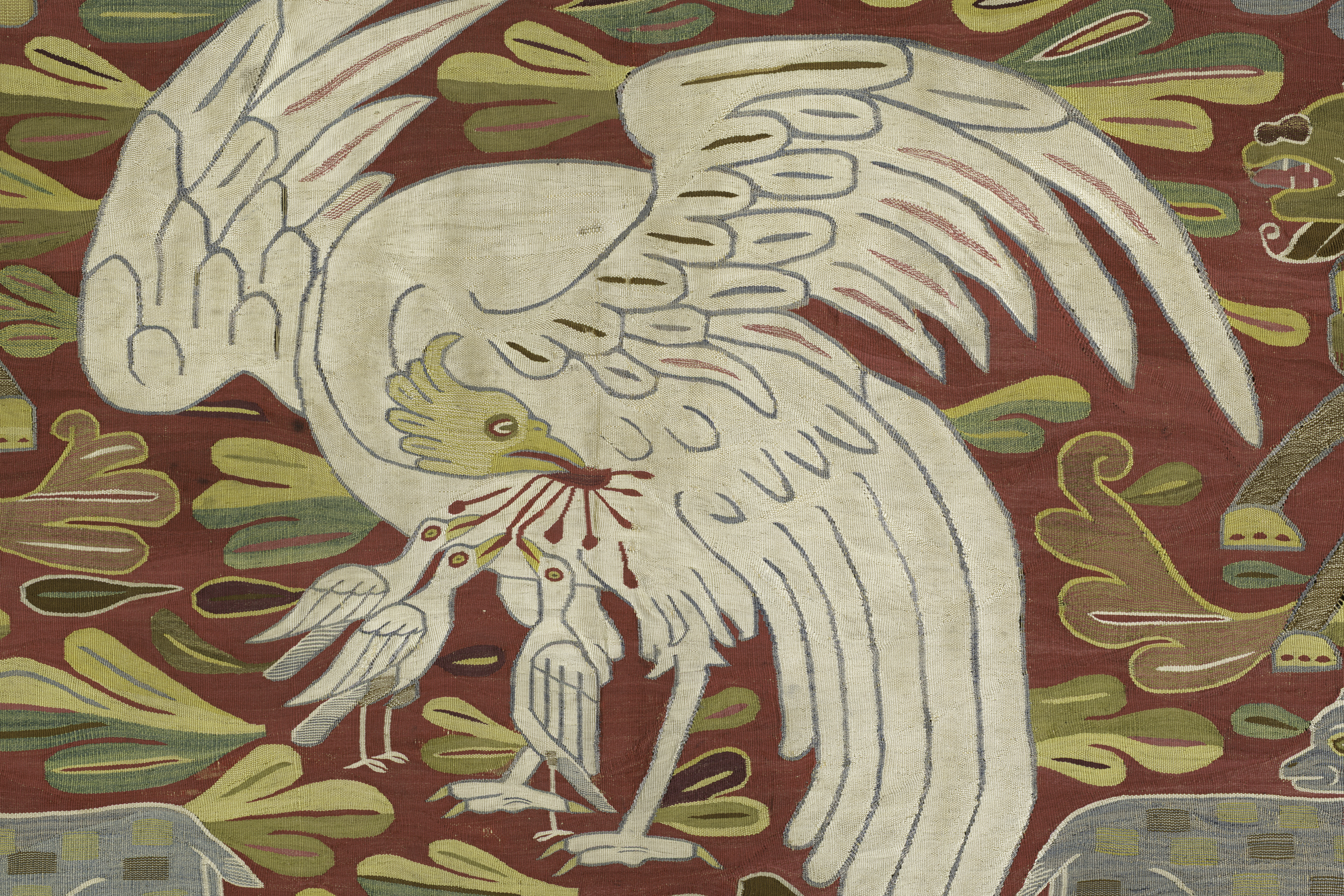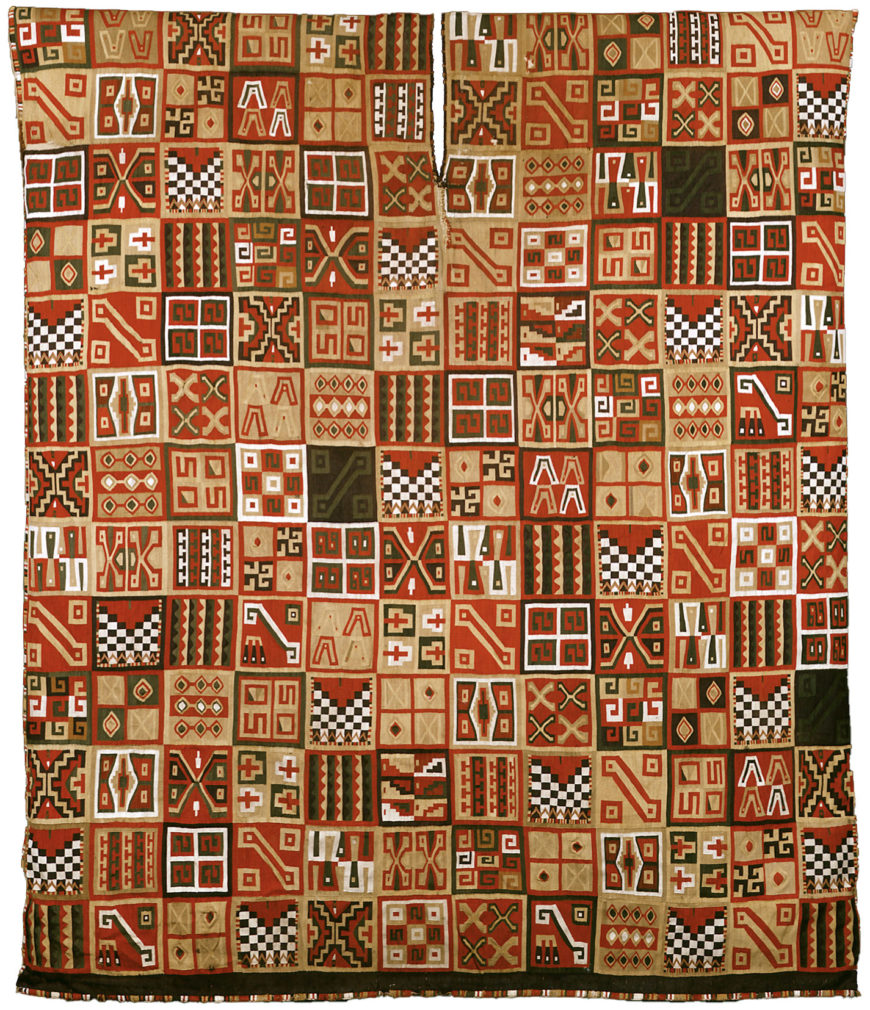
All-T’oqapu Tunic, Inka, 1450–1540, camelid fiber and cotton, 90.2 x 77.15 cm (Dumbarton Oaks, Washington D.C.)
As in the sacred temples of the Christians, and in the Apostolic Palace of the Pope of Rome, the royal or imperial palaces [of the Inkas] were commonly whitewashed with gesso or lime, and during solemn festivals they were accustomed to adorning them with beautiful and rich tapestries, and for those of the greatest solemnity they would add brocades and fabrics of gold.Gonzalo Fernández de Oviedo, Historia general y natural de las Indias (General and Natural History of the Indies), 1492–1549
This statement, made by the Spanish naturalist and historian Gonzalo Fernández de Oviedo, describes the public use of textiles among the Inka in his Historia general y natural de las Indias (General and Natural History of the Indies), written between 1492–1549. Textiles were important in Inka culture, with the highest quality examples worth more than gold or any other luxury item.
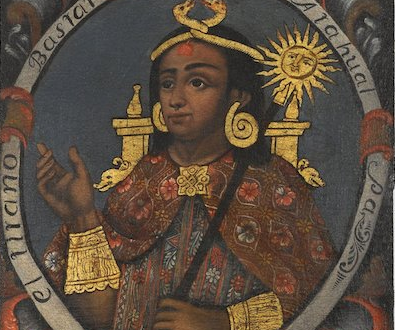
Atahualpa, Fourteenth Inka, c. mid-18th century, oil on canvas, 23 ½ x 21 11/16″ (Brooklyn Museum of Art, New York)
Textiles remained important items after the Spanish conquest in the Viceroyalty of Peru. In general, non-religious art enjoyed widespread consumption among the Viceroyalty of Peru’s diverse populace. Clothing, tapestries, drinking cups, and portraits helped express social identities as well as the negotiation of cultural boundaries. Many pre-Columbian artistic traditions continued into the colonial period and became invigorated with new materials and systems of manufacture. This was certainly true of textiles.
Unkus
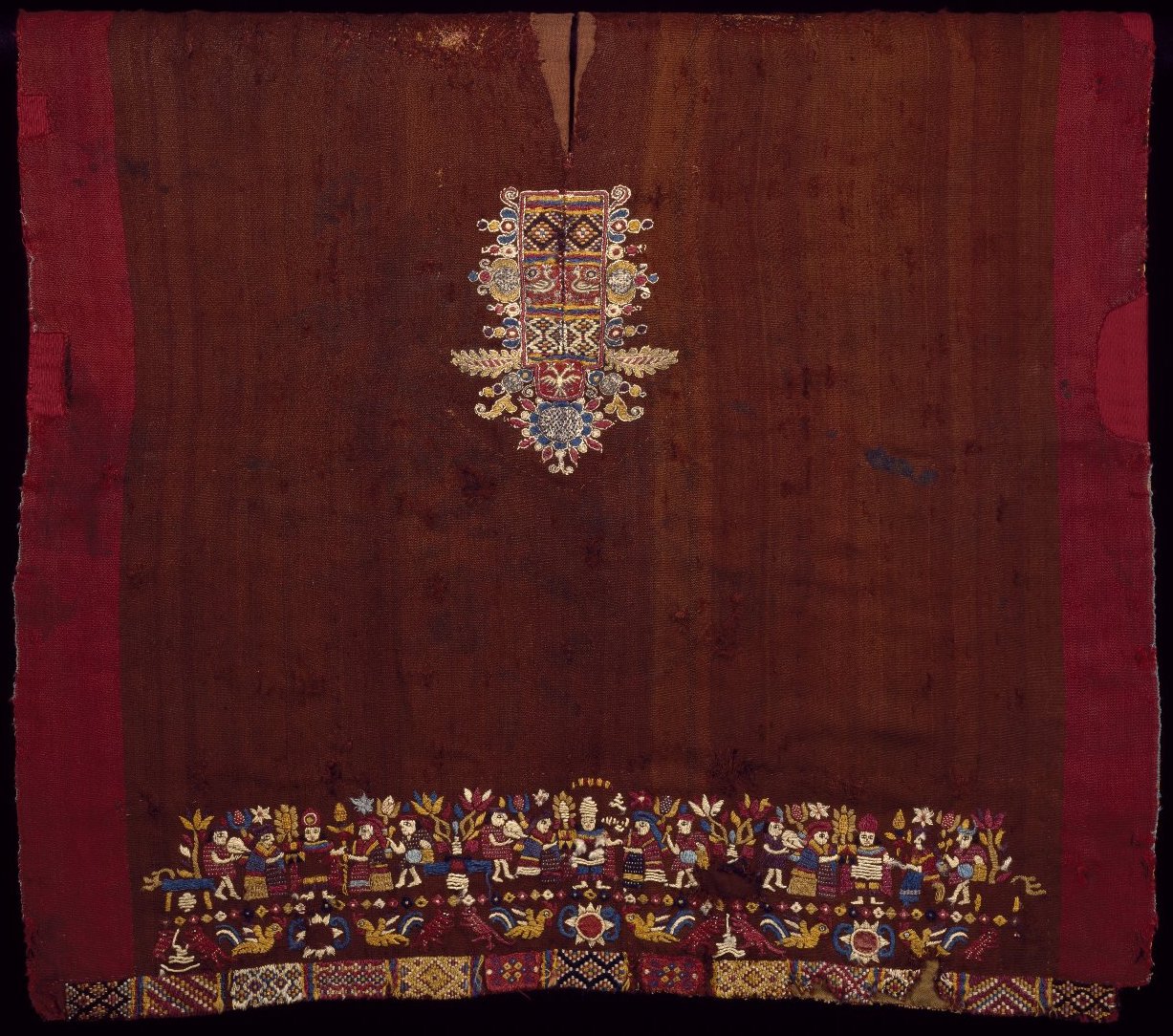
Tunic (Uncu), c. 17th century. Camelid fiber, silk, metallic thread, 67.9 x 78.7 cm (Brooklyn Museum of Art, New York)
Although indigenous men were expected to adopt European-style dress, specialized weavers continued to produce uncus, or tunics, for special ceremonial occasions. A man’s tunic (above) dating to the seventeenth century features a colonial reinterpretation of a pre-Columbian weaving tradition. The tunic contains a band of tocapu along the bottom edge, which may symbolize the wearer’s geographical or ethnic affiliation.
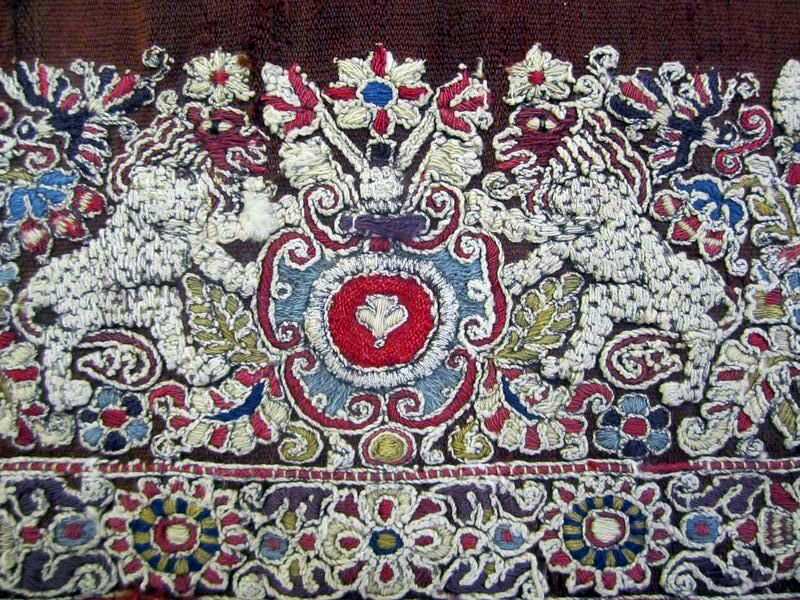
Tunic (Uncu), detail, ca. 17th century. Camelid fiber, silk, metallic thread, 67.9 x 78.7 cm (Brooklyn Museum of Art, New York)
Some of the colonial tocapu seem to lack any specific meanings and appear somewhat generic, leading some scholars to suggest that tocapu became associated with a generalized notion of “Inkaness” used as a way to assert elite indigenous status. A set of rampant lions with raised paws is embroidered along the bottom edge of the backside of the tunic, betraying its colonial manufacture. Lions are animals commonly used in European art whose iconography circulated throughout the Americas after the Spanish conquest.
This type of tunic would have been commissioned by members of the indigenous elite and worn during ceremonial occasions such as civic processions and religious festivals including the feast of Corpus Christi. We see individuals wearing specialized tunics in paintings showing the procession during this feast. Tunics woven in an Inka style allowed native Andean elites to reenact and reinvent Inka power within a new colonial context.
Tapestries
Tapestries also reveal a great deal about artistic cross-fertilization in the colonial Andes. Inka tunics belonged to a small segment of the population who claimed ties to the indigenous elite, while tapestries were enjoyed by a broader cross-section of the population (albeit the wealthy who could afford luxury goods). Textiles such as Tapestry with Pelican adorned the interiors of private residences as wall hangings or served as backdrops for religious and civic processions. The tapestry, which dates to the late seventeenth or early eighteenth century, attests to the robust trans-Pacific Manila galleon trade with which the Viceroyalty of Peru was engaged.
The iconography of the tapestry derives, in part, from embroidered Chinese silks that arrived in the Americas in large numbers after the fall of the Ming Dynasty in 1644. The pelican is depicted feeding her young with droplets of her own blood. As art historian Elena Phipps points out, this represents the Pelican in Her Piety, a common symbol employed by missionaries to represent Christ’s sacrifice. This serves as a reminder of the frequent presence of Christian themes even among artworks intended for private, non-religious consumption. The colorful tapestry also contains dogs, rabbits, parrots, horses, and Chinese mythological animals nestled among flowers and foliage giving it the appearance of a supernatural forest.
Textile murals
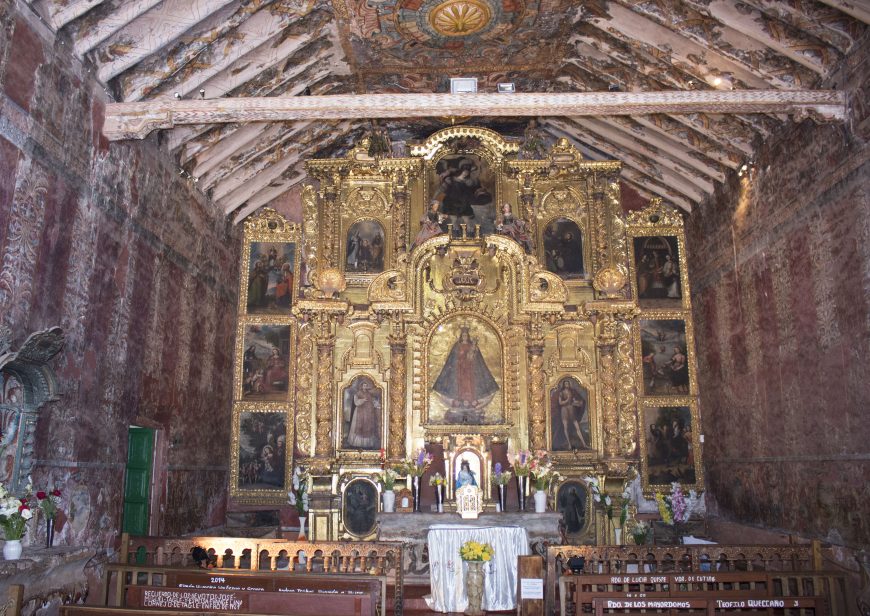
Mural painting imitating the appearance of textiles, 17th century, Chapel of Canincunca, Peru (Photo: Ananda Cohen-Aponte)
Tapestries figured so prominently in colonial Andean life that artists adapted their designs to a variety of artistic media. By the late seventeenth century, a number of rural churches throughout the Cuzco diocese featured “textile murals” that mimicked expensive brocades, laces, and tapestries but depicted with tempera paint applied to the walls in fresco secco (mural painting on dry plaster) technique.
One of the most impressive examples of a textile mural can be found at the chapel of Canincunca dedicated to Nuestra Señora de la Candelaria in the Quispicanchi Province just twenty miles southeast of the city of Cuzco. The entire interior of the chapel appears to be “draped” with sumptuous wall hangings, which upon closer inspection are in fact trompe l’oeil paintings that imitate the design and texture of cloth. The textile patterns consist of urns with flowering bouquets and counterposed s-shaped curves with leafy appendages. The patterns and color scheme resemble surviving examples of colonial textiles with interlaced vegetal motifs and floral ornamentation.
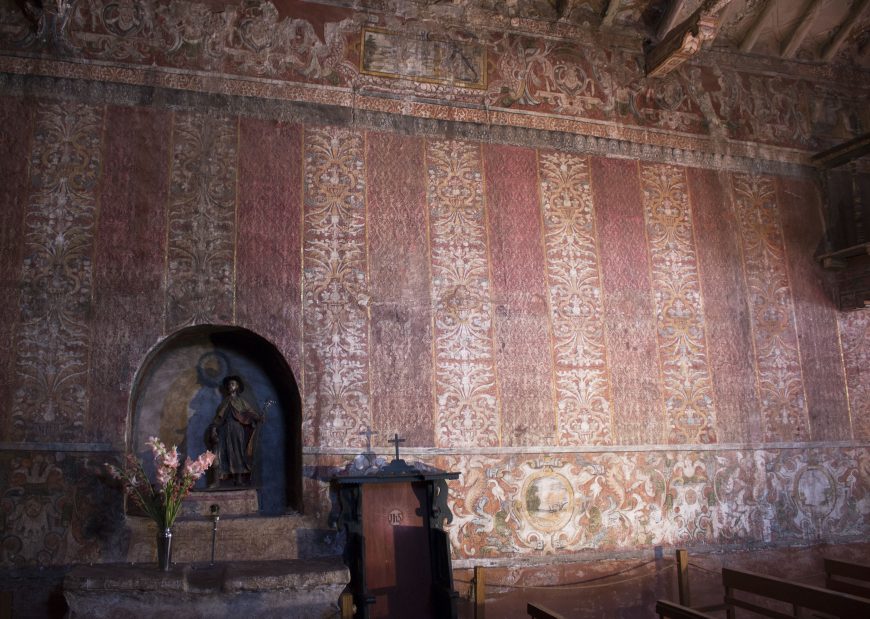
Mural painting imitating the appearance of textiles, detail, 17th century, Chapel of Canincunca, Peru (Photo: Ananda Cohen-Aponte)
Although the textile murals at Canincunca are in the religious context of a church setting, the designs themselves are abstract and contain no explicit references to Christianity. Textile murals hovered at the intersection of religious and secular art, endowed with sacredness by virtue of their location within religious spaces. The notion of “clothing” a church with painted simulations of cloth may have also participated in the personification of the church as a living, bodily entity, whose resonances with Andean beliefs around the animated quality of the natural world would have been especially palpable.
Additional Resources
Elena Phipps, Johanna Hecht, and Cristina Esteras Martín, eds., The Colonial Andes: Tapestries and Silverwork, 1530–1830 (New Haven: Yale University Press and The Metropolitan Museum of Art, 2004)
Ananda Cohen Suarez, Heaven, Hell, and Everything in Between (Austin: The University of Texas Press, 2016)
Ananda Cohen Suarez, Painting Beyond the Frame: Religious Murals of Colonial Peru, on MAVCOR

